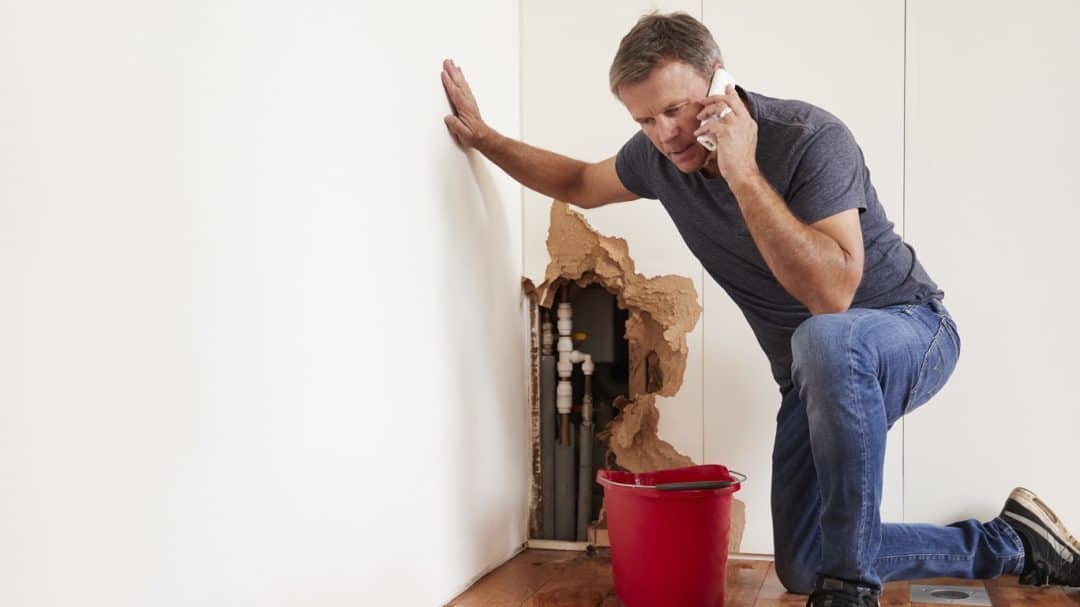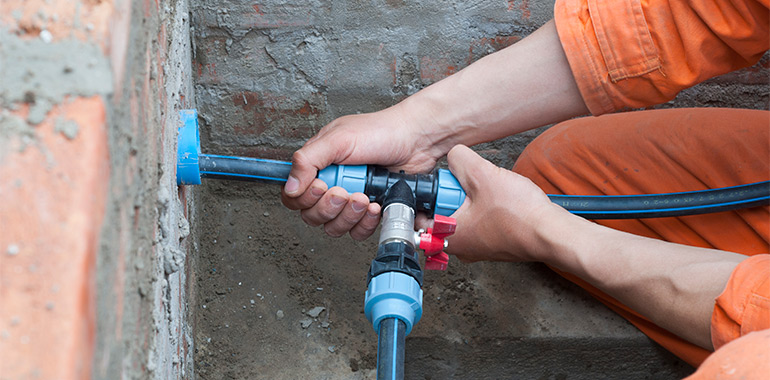Presented here in the next paragraph you might get lots of decent news about Why Do My Pipes Make Noises.

To diagnose loud plumbing, it is necessary to establish initial whether the undesirable noises happen on the system's inlet side-in various other words, when water is transformed on-or on the drainpipe side. Sounds on the inlet side have varied causes: excessive water pressure, used shutoff and faucet parts, improperly attached pumps or other appliances, incorrectly placed pipe fasteners, and also plumbing runs containing too many tight bends or other limitations. Sounds on the drain side normally originate from bad place or, as with some inlet side noise, a layout having limited bends.
Hissing
Hissing sound that occurs when a faucet is opened a little usually signals extreme water pressure. Consult your local public utility if you think this problem; it will certainly be able to tell you the water stress in your location and also can mount a pressurereducing shutoff on the incoming supply of water pipe if necessary.
Thudding
Thudding noise, often accompanied by shuddering pipelines, when a tap or home appliance valve is switched off is a problem called water hammer. The sound as well as vibration are caused by the resounding wave of stress in the water, which all of a sudden has no place to go. Sometimes opening up a shutoff that discharges water quickly right into an area of piping including a restriction, arm joint, or tee fitting can produce the very same condition.
Water hammer can generally be healed by installing fittings called air chambers or shock absorbers in the plumbing to which the trouble valves or faucets are attached. These gadgets allow the shock wave developed by the halted circulation of water to dissipate in the air they have, which (unlike water) is compressible.
Older plumbing systems might have short upright sections of capped pipe behind wall surfaces on faucet competes the exact same purpose; these can ultimately fill with water, lowering or ruining their efficiency. The cure is to drain pipes the water system completely by shutting down the main water system valve and also opening all taps. Then open up the primary supply shutoff as well as close the faucets one at a time, starting with the tap nearest the shutoff as well as finishing with the one farthest away.
Babbling or Shrilling
Extreme chattering or shrieking that occurs when a shutoff or faucet is activated, and that normally disappears when the installation is opened fully, signals loosened or defective interior parts. The option is to change the valve or tap with a new one.
Pumps as well as devices such as washing makers as well as dishwashing machines can transfer motor sound to pipes if they are incorrectly linked. Connect such items to plumbing with plastic or rubber hoses-never inflexible pipe-to isolate them.
Other Inlet Side Noises
Creaking, squealing, scratching, breaking, and also tapping normally are brought on by the growth or tightening of pipes, typically copper ones providing hot water. The audios occur as the pipes slide versus loose bolts or strike nearby home framework. You can often identify the place of the trouble if the pipes are exposed; simply adhere to the sound when the pipes are making sounds. Most likely you will find a loosened pipe wall mount or a location where pipelines exist so near floor joists or other mounting items that they clatter versus them. Affixing foam pipe insulation around the pipes at the point of get in touch with need to remedy the problem. Be sure straps as well as wall mounts are safe and secure and also give adequate assistance. Where feasible, pipeline bolts should be attached to enormous architectural components such as structure wall surfaces instead of to framing; doing so lessens the transmission of vibrations from plumbing to surfaces that can enhance as well as move them. If affixing fasteners to framing is inevitable, cover pipes with insulation or other resilient material where they get in touch with fasteners, and sandwich the ends of new fasteners in between rubber washing machines when mounting them.
Correcting plumbing runs that suffer from flow-restricting tight or numerous bends is a last option that should be undertaken only after consulting an experienced plumbing contractor. However, this scenario is fairly common in older residences that might not have actually been developed with indoor plumbing or that have actually seen numerous remodels, particularly by novices.
Drainpipe Noise
On the drainpipe side of plumbing, the principal objectives are to get rid of surfaces that can be struck by falling or hurrying water as well as to protect pipes to contain inescapable audios.
In brand-new building and construction, bath tubs, shower stalls, bathrooms, and wallmounted sinks and containers must be set on or versus resistant underlayments to minimize the transmission of sound through them. Water-saving commodes as well as faucets are much less loud than traditional models; mount them rather than older types even if codes in your location still allow utilizing older fixtures.
Drains that do not run vertically to the basement or that branch right into horizontal pipe runs sustained at floor joists or other mounting present particularly bothersome noise troubles. Such pipelines are large sufficient to radiate considerable resonance; they likewise carry considerable amounts of water, that makes the scenario worse. In new construction, define cast-iron soil pipelines (the big pipelines that drain toilets) if you can manage them. Their massiveness has much of the sound made by water going through them. Additionally, prevent routing drains in walls shown bedrooms and spaces where people collect. Walls having drainpipes need to be soundproofed as was explained previously, utilizing dual panels of sound-insulating fiberboard and also wallboard. Pipes themselves can be covered with special fiberglass insulation produced the objective; such pipelines have an impervious plastic skin (sometimes consisting of lead). Outcomes are not always sufficient.
3 Most Common Reasons for Noisy Water Pipes
Water hammer
When water is running and is then suddenly turned off, the rushing liquid has no place to go and slams against the shut-off valve. The loud, thudding sound that follows is known as a water hammer. Besides being alarming, water hammer can potentially damage joints and connections in the water pipe itself. There are two primary methods of addressing this issue.
Check your air chamber. An air chamber is essentially a vertical pipe located near your faucet, often in the wall cavity that holds the plumbing connected to your sink or tub. The chamber is filled with air that compresses and absorbs the shock of the fast moving water when it suddenly stops. Unfortunately, over time air chambers tend to fill with water and lose their effectiveness. To replenish the air chambers in your house you can do the following. Turn off the water supply to your house at the main supply (or street level). Open your faucets to drain all of the water from your plumbing system. Turn the water back on. The incoming water will flush the air out of the pipes but not out of the vertical air chamber, where the air supply has been restored. Copper pipes
Copper pipes tend to expand as hot water passes through and transfers some of its heat to them. (Copper is both malleable and ductile.) In tight quarters, copper hot-water lines can expand and then noisily rub against your home's hidden structural features — studs, joists, support brackets, etc. — as it contracts.
One possible solution to this problem is to slightly lower the temperature setting on your hot water heater. In all but the most extreme cases, expanding and contracting copper pipes will not spring a leak. Unless you’re remodeling, there's no reason to remove sheetrock and insert foam padding around your copper pipes.
Water pressure that’s too high
If your water pressure is too high, it can also cause noisy water pipes. Worse, high water pressure can damage water-supplied appliances, such as your washing machine and dishwasher.
Most modern homes are equipped with a pressure regulator that's mounted where the water supply enters the house. If your home lacks a regulator, consider having one professionally installed. Finally, remember that most plumbers recommend that water is delivered throughout your home at no lower than 40 and no greater than 80 psi (pounds per square inch).
Whatever the state of your plumbing, one thing is certain — you’re eventually going to encounter repair and replacement issues around your home that require professional help. That’s where American Home Shield can come to your aid.
https://www.ahs.com/home-matters/repair-maintenance/causes-of-noisy-water-pipes/

As a reader about Why Do My Plumbing Pipes Make A Knocking Noise, I thought sharing that piece of content was beneficial. Liked our write up? Please share it. Let others check it out. Thanks so much for taking the time to read it.
Book Instantly